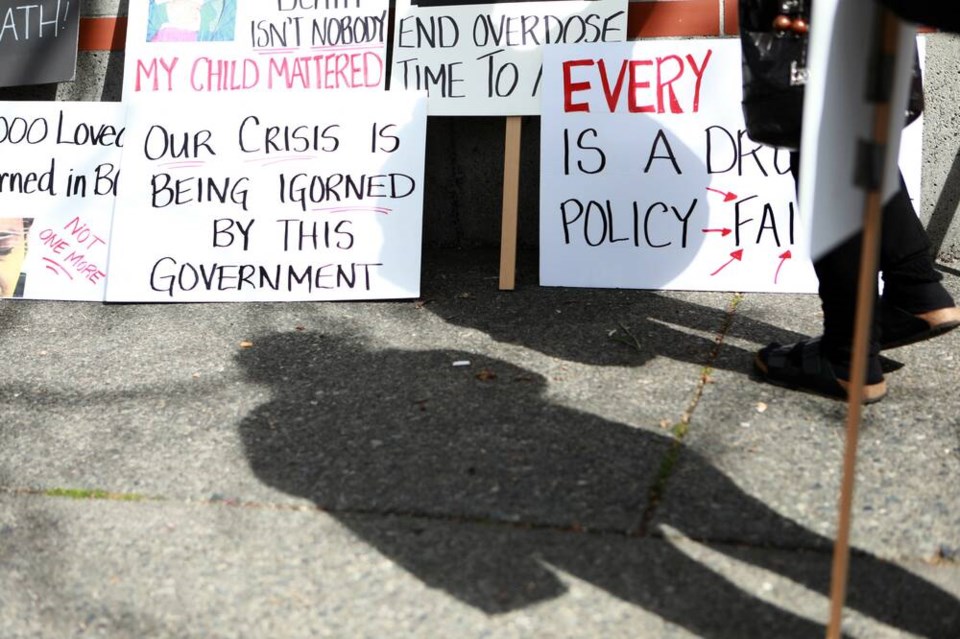The chief and council of a Vancouver Island First Nation have declared a state of emergency due to the “unrelenting impact” of drugs and alcohol on their people, particularly youth.
The Ehattesaht First Nation, based in and around Zeballos, says it has lost six young people to drug overdoses in the past few months.
“This is one of the hardest things we have done as a nation,” said Chief Simon John. “Our people are continually let down and we have reached the end of our ability to cope with this problem with the Band-Aids we scratch together.”
Ehattesaht, with about 500 registered members, is one of 14 Nuu-chah-nulth nations on the Island. Zeballos has a population of about 125, according to the 2021 census.
The majority live on a reservation in the area, while a number of members have moved to other locations. The recent youth deaths were largely in cities, including Campbell River, Victoria and Vancouver, John said.
The First Nation said that, like many Indigenous groups in Canada, it is suffering from “the intergenerational effects of residential schools and the oppression of the systems that the federal and provincial governments have created.”
It said the combined impact of the community’s isolated location on the northwest coast of the Island and a “wave of highly addictive drugs” is crippling, and called for the provincial and federal governments to help in the creation of a survival plan.
“We are treading water, exhausted and can’t see the shore anymore,” said John, who attended a residential school in Tofino from age five. “I know there are good words from government, but we are still being handed from one ministry or department to another.
“Nearly a quarter of our population are addicted, on the street, under-housed or are children in care. Every day, I sit with families heartbroken with worry and it’s unacceptable.”
Figures provided by B.C.’s chief coroner, Lisa Lapointe, show that there have been just over 11,000 deaths from drug toxicity since a public-health emergency on the issue was declared in April 2016, with 82 per cent of deaths involving fentanyl. Almost 2,300 deaths occurred last year.
Dr. Nel Wieman, acting chief medical officer for the First Nations Health Authority, said in January that First Nations people are being killed by illicit drugs at five times the rate of the province’s general population. For First Nations women, the rate is 8.8 times higher than other women in B.C.
The Ehattesaht say they have tried to come up with a comprehensive plan to deal with drug and alcohol concerns, but have not had in much success in dealing with “institutional barriers” to find programs.
“We get a call or letter every few weeks on land-use issues and other government priorities, but can’t seem to get the attention of the social service ministries,” John said. “We are losing our young people. Our state of emergency calls on government to help us change that.
“We need help. I can’t say it any other way.”
Minister of Indigenous Relations and Reconciliation Murray Rankin said he is committed to working with the community to address its emergency.
“Every life lost to toxic drugs is one too many,” he said. “Lack of housing and the overdose crisis is a province-wide issue and a top priority for this government.”
He said the First Nations Health Authority contacted the community this week and that they are “eager” to work with the federal government as well.
Rankin’s ministry began negotiating with the Ehattesaht in January 2022 on a reconciliation agreement, he said.
“In that context, we are currently working with Ehattesaht to identify priorities to support healing and wellness both on and off reserve for the nation’s members,” Rankin said.
“In regard to health services, we are committed to a community-led response, and learned from COVID how to effectively co-ordinate, mitigate and support nations.”
>>> To comment on this article, write a letter to the editor: [email protected]



